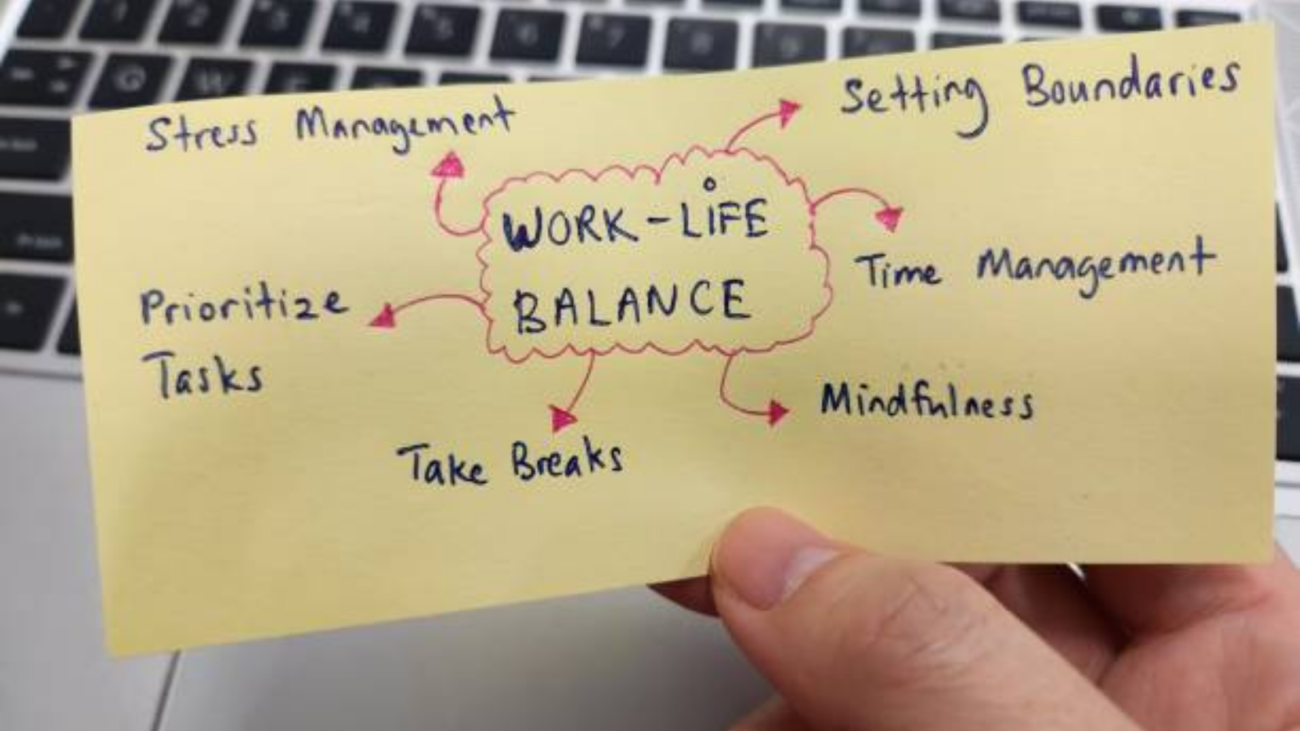Introduction
In the hustle and bustle of modern life, stress often becomes an unwelcome companion. Balancing work responsibilities with personal life can seem overwhelming, leaving little time for self-care. The good news? With the right stress management techniques, you can reclaim control, reduce anxiety, and find harmony.
This guide is packed with top stress management tips for work-life balance to help you feel calmer, more productive, and fulfilled. Whether you’re a busy professional, a parent juggling countless tasks, or someone trying to carve out time for self-care, these strategies are designed to transform your day-to-day life.
Let’s dive into actionable tips that reduce stress and enhance your work-life balance!
Why Stress Management is Key to Work-Life Balance
Stress isn’t just a mental challenge; it can impact your physical health, productivity, and relationships. When unmanaged, stress leads to burnout, decreased efficiency, and poor quality of life. Here’s why learning to manage stress is crucial:
- Boosts productivity: Reduced stress means clearer thinking and better focus.
- Improves health: Lower stress levels decrease the risk of chronic illnesses like hypertension.
- Enhances relationships: A calm mind fosters better communication and connection.
Now that we understand the importance, let’s explore practical tips to manage stress while achieving work-life balance.

Top Stress Management Tips for Work-Life Balance
1. Prioritize Your Tasks with the Eisenhower Matrix
One of the biggest contributors to stress is feeling overwhelmed by your to-do list. The Eisenhower Matrix helps you categorize tasks based on urgency and importance.
How It Works:
- Urgent and Important: Do these immediately.
- Important but Not Urgent: Schedule them.
- Urgent but Not Important: Delegate them.
- Neither Urgent nor Important: Eliminate them.
Why It Helps:
This method ensures you focus on what truly matters, reducing unnecessary stress from low-priority tasks.
2. Practice Mindfulness Daily
Mindfulness is the art of being present in the moment. By practicing mindfulness, you can reduce anxiety and improve mental clarity.
How to Start:
- Use apps like Headspace or Calm for guided meditation.
- Practice deep breathing exercises during work breaks.
- Take 5 minutes each day to focus on your senses: sight, sound, smell, taste, and touch.
Why It Helps:
Mindfulness interrupts the cycle of stress and overthinking, helping you feel more grounded and in control.
3. Set Clear Boundaries Between Work and Personal Life
Blurred boundaries between work and home life are a leading cause of stress. Establishing clear limits ensures you can fully relax during personal time.
Actionable Tips:
- Create a dedicated workspace: This helps your brain separate work from leisure.
- Stick to a schedule: Set specific hours for work and avoid overtime.
- Turn off notifications: Silence work-related notifications after hours.
Why It Helps:
Boundaries protect your personal time, allowing you to recharge without guilt.
4. Incorporate Regular Exercise
Physical activity is a proven stress buster. Exercise releases endorphins, the body’s natural stress-relief hormones.
Simple Ideas to Get Moving:
- Take a 30-minute walk during lunch breaks.
- Try yoga or Pilates for both physical and mental relaxation.
- Join a local fitness class to stay motivated.
Why It Helps:
Exercise not only reduces stress but also boosts energy levels and improves mood.
5. Adopt the Pomodoro Technique
The Pomodoro Technique improves productivity by breaking work into manageable intervals.
How It Works:
- Work for 25 minutes on a task.
- Take a 5-minute break.
- Repeat this cycle 4 times, then take a longer 15-30 minute break.
Why It Helps:
This approach prevents burnout and ensures you stay focused without overexerting yourself.
6. Learn to Say No
Taking on too much is a fast track to stress. Learning to decline additional tasks when you’re overwhelmed is essential for maintaining balance.
How to Say No Politely:
- “I’d love to help, but I’m currently at capacity.”
- “Can we revisit this after I’ve completed my current priorities?”
- “I appreciate the opportunity, but I need to focus on my existing commitments.”
Why It Helps:
Saying no preserves your energy for what truly matters, reducing unnecessary stress.
7. Nurture Your Support System
Connecting with family, friends, or colleagues who understand your struggles can significantly reduce stress.
How to Strengthen Your Support System:
- Schedule weekly catch-ups with loved ones.
- Join online communities or local groups with similar interests.
- Share your challenges openly to gain advice and perspective.
Why It Helps:
Social support provides emotional relief and practical solutions to challenges.
8. Focus on Nutrition
What you eat affects how you feel. A balanced diet with stress-reducing foods can help you manage anxiety.
Top Foods for Stress Management:
- Leafy greens: Rich in magnesium, which helps regulate cortisol levels.
- Berries: Packed with antioxidants that combat stress.
- Nuts: A great source of omega-3s and B vitamins for brain health.
Why It Helps:
Healthy eating supports both physical and mental well-being, reducing the impact of stress.
9. Delegate and Automate Tasks
You don’t have to do everything yourself. Delegating or automating tasks can free up time and mental energy.
Examples:
- Use tools like Trello or Asana to assign tasks at work.
- Automate bill payments and grocery deliveries.
- Hire help for household chores if possible.
Why It Helps:
Offloading tasks prevents overwhelm, allowing you to focus on higher-priority areas.
10. Take Breaks to Recharge
Continuous work without breaks leads to exhaustion and reduced productivity.
Break Ideas:
- Spend 10 minutes in nature to refresh your mind.
- Listen to music or a podcast you enjoy.
- Try progressive muscle relaxation to relieve tension.
Why It Helps:
Regular breaks improve focus and reduce the mental fatigue that contributes to stress.

Frequently Asked Questions About Stress Management and Work-Life Balance
1. How do I know if I’m stressed?
Signs of stress include fatigue, irritability, trouble sleeping, and difficulty concentrating.
2. Can I achieve work-life balance while working long hours?
Yes! It’s about prioritizing and using your time efficiently. Techniques like the Pomodoro Technique and setting boundaries can help.
3. How long does it take to see results from stress management techniques?
Most people feel relief within a few days to weeks of consistent practice.
4. Are there apps to help with stress management?
Absolutely! Apps like Headspace, Calm, and RescueTime are excellent for reducing stress and improving productivity.
5. What if I still feel overwhelmed despite trying these tips?
It’s okay to seek professional help. A therapist or counselor can provide personalized strategies to manage stress.
Conclusion
Stress doesn’t have to control your life. By implementing these top stress management tips, you can create a healthier balance between work and personal time. Remember, small changes lead to significant improvements. Whether it’s prioritizing tasks, practicing mindfulness, or simply taking regular breaks, each step moves you closer to a more balanced and fulfilling life.
Start your journey today and rediscover the joy of a stress-free lifestyle!
Notes
Meta Description
Transform your routine with these top stress management tips for work-life balance! Learn actionable strategies to reduce anxiety, boost productivity, and improve harmony in your life.
Tags
stress management tips, work-life balance, productivity hacks, mindfulness techniques, stress relief tips, time management strategies, healthy habits, mental health tips, personal growth, reducing burnout
Longtail Tags
top tips for work stress management, mindfulness for work-life balance, strategies to reduce work burnout, effective ways to manage stress, stress-free productivity hacks
Strategies to Consider
- Include Real-Life Examples: Share relatable scenarios or case studies.
- Add Visual Aids: Use infographics to make tips more digestible.
- Encourage Reader Interaction: End with a question to prompt comments.
- Provide Downloadable Resources: Offer free guides or templates.
- Optimize for Mobile: Ensure the content is easy to read on all devices.
Read more articles about health on our blog page

Add a Comment